Applies one of several morphological operations from imager to a layer of a
recolorize object. Convenient for cleaning up a color patch without affecting
other layers of the recolorized image. This can be used to despeckle, fill in
holes, or uniformly grow or shrink a color patch.
Arguments
- recolorize_obj
A recolorize object from
recolorize(),recluster(), orimposeColors().- layer_idx
A single index value (numeric) indicating which layer to edit. Corresponds to the order of the colors in the
centersattribute of the recolorize object, and to the indices in thepixel_assignmentsattribute of the same.- operation
The name of an imager morphological operation to perform on the layer, passed as a string. See details.
- px_size
The size (in pixels) of the elements to filter. If
operation = "shrink"andpx_size = 2, for example, the color patch will be shrunk by a 2-pixel radius.- plotting
Logical. Plot results?
Value
A recolorize object. The sizes, pixel_assignments,, and
recolored_img attributes will differ from the input object for the
relevant color patch (layer) to reflect the edited layer.
Details
Current imager operations are:
imager::grow(): Grow a pixsetimager::shrink(): Shrink a pixsetimager::fill(): Remove holes in an pixset. Accomplished by growing and then shrinking a pixset.imager::clean(): Remove small isolated elements (speckle). Accomplished by shrinking and then growing a pixset.
See also
editLayers for editing multiple layers (with multiple operations) at once; a wrapper for this function.
Examples
# load image and recolorize it
img <- system.file("extdata/corbetti.png", package = "recolorize")
# first do a standard color binning
init_fit <- recolorize(img, bins = 2, plotting = FALSE)
#>
#> Using 2^3 = 8 total bins
# then cluster patches by similarity
re_fit <- recluster(init_fit, cutoff = 40)
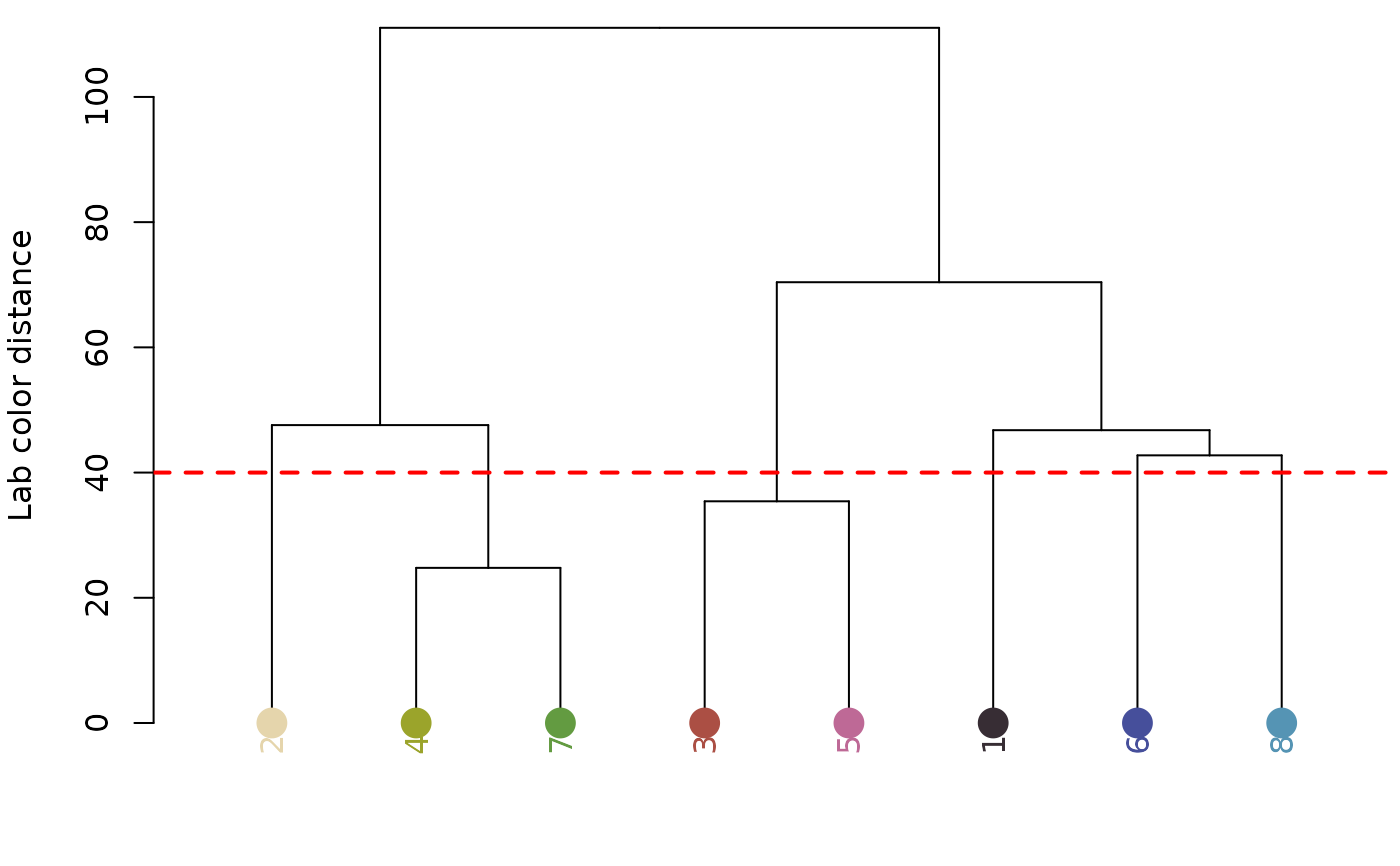
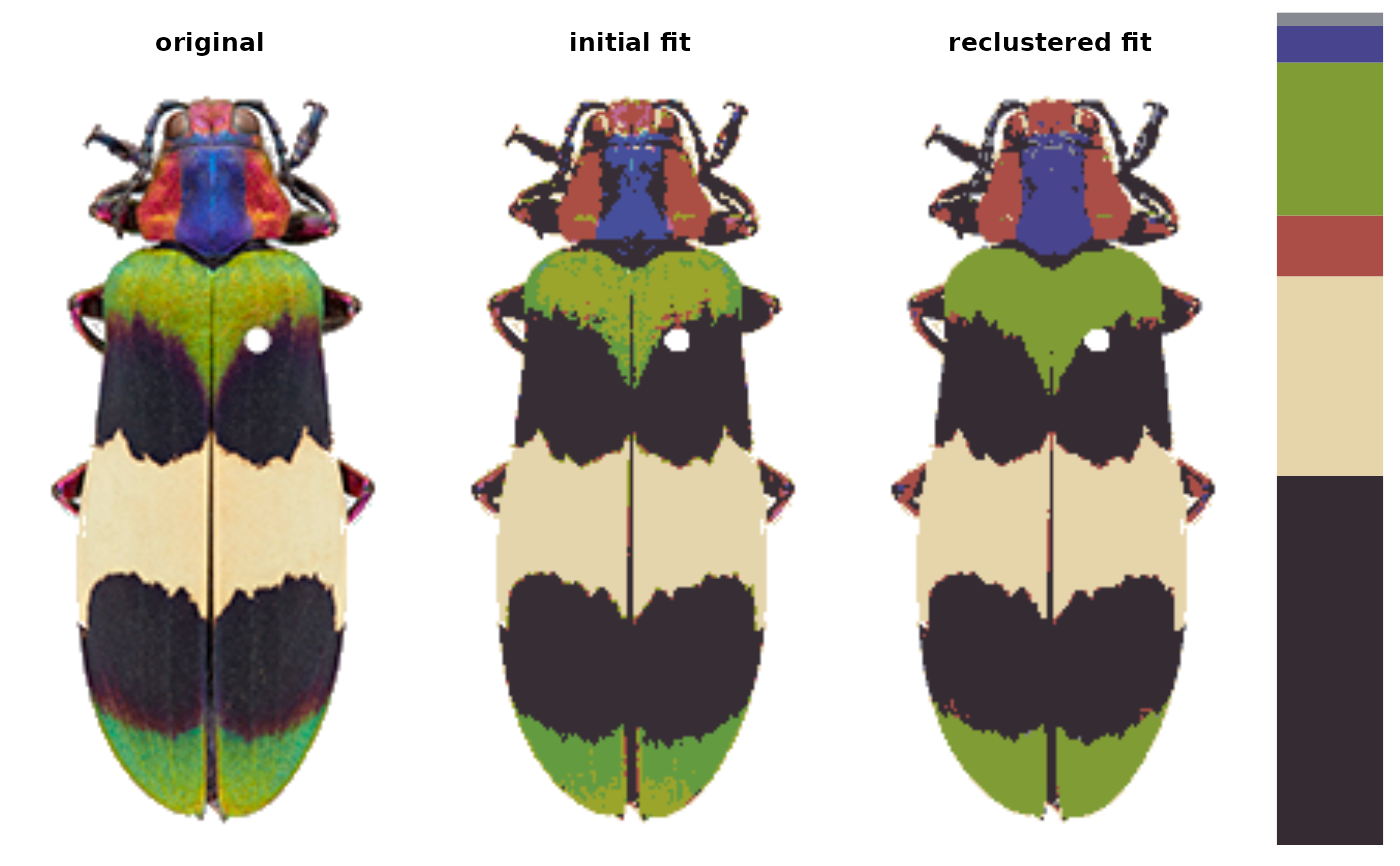 # to reset graphical parameters:
current_par <- graphics::par(no.readonly = TRUE)
# examine individual layers:
layout(matrix(1:6, nrow = 2))
layers <- splitByColor(re_fit, plot_method = "color")
# to reset graphical parameters:
current_par <- graphics::par(no.readonly = TRUE)
# examine individual layers:
layout(matrix(1:6, nrow = 2))
layers <- splitByColor(re_fit, plot_method = "color")
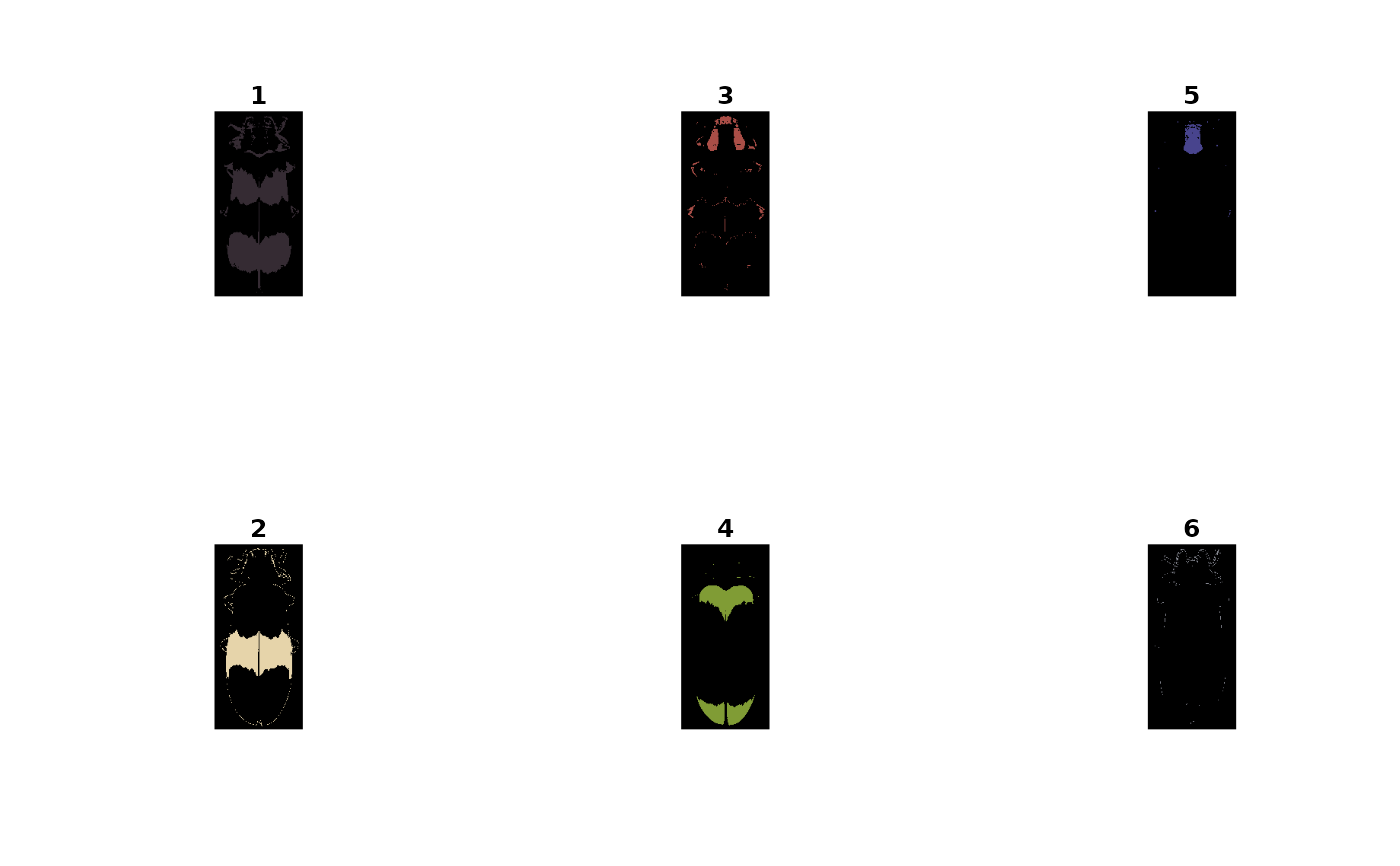 # notice patch 2 (cream) - lots of stray pixels
edit_cream_layer <- editLayer(re_fit,
layer_idx = 2,
operation = "clean",
px_size = 3)
# notice patch 2 (cream) - lots of stray pixels
edit_cream_layer <- editLayer(re_fit,
layer_idx = 2,
operation = "clean",
px_size = 3)
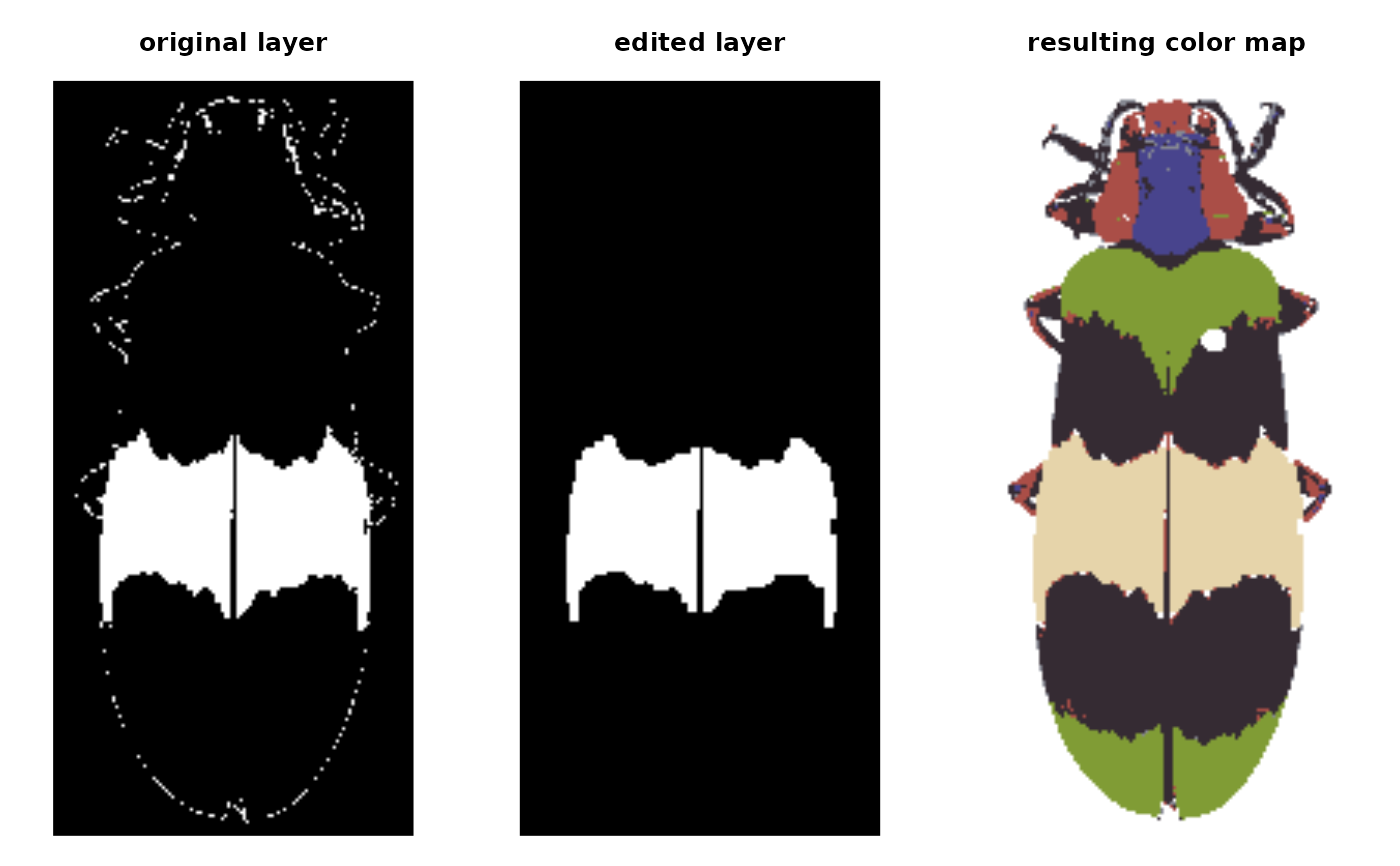 # shrinking and growing by the same element size gives us less flexibility, so
# we can also shrink and then grow, using different px_size arguments:
edit_green_1 <- editLayer(re_fit,
layer_idx = 4,
operation = "shrink",
px_size = 2)
# shrinking and growing by the same element size gives us less flexibility, so
# we can also shrink and then grow, using different px_size arguments:
edit_green_1 <- editLayer(re_fit,
layer_idx = 4,
operation = "shrink",
px_size = 2)
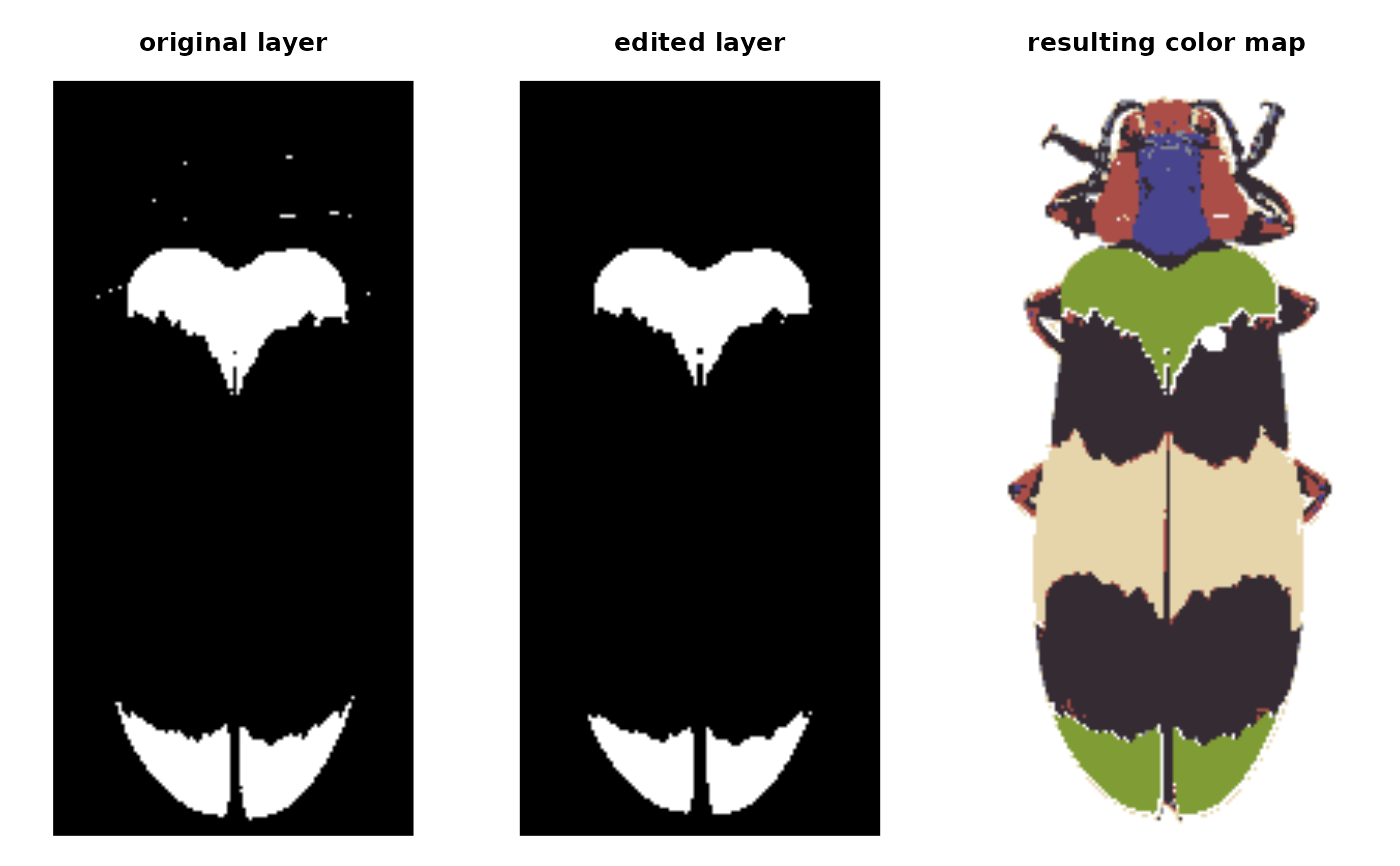 edit_green_2 <- editLayer(edit_green_1,
layer_idx = 4,
operation = "grow",
px_size = 3)
edit_green_2 <- editLayer(edit_green_1,
layer_idx = 4,
operation = "grow",
px_size = 3)
 # we can get pleasingly mondrian about it:
new_fit <- re_fit
for (i in 1:nrow(new_fit$centers)) {
new_fit <- editLayer(new_fit,
layer_idx = i,
operation = "fill",
px_size = 5, plotting = FALSE)
}
plot(new_fit)
# we can get pleasingly mondrian about it:
new_fit <- re_fit
for (i in 1:nrow(new_fit$centers)) {
new_fit <- editLayer(new_fit,
layer_idx = i,
operation = "fill",
px_size = 5, plotting = FALSE)
}
plot(new_fit)
 graphics::par(current_par)
graphics::par(current_par)